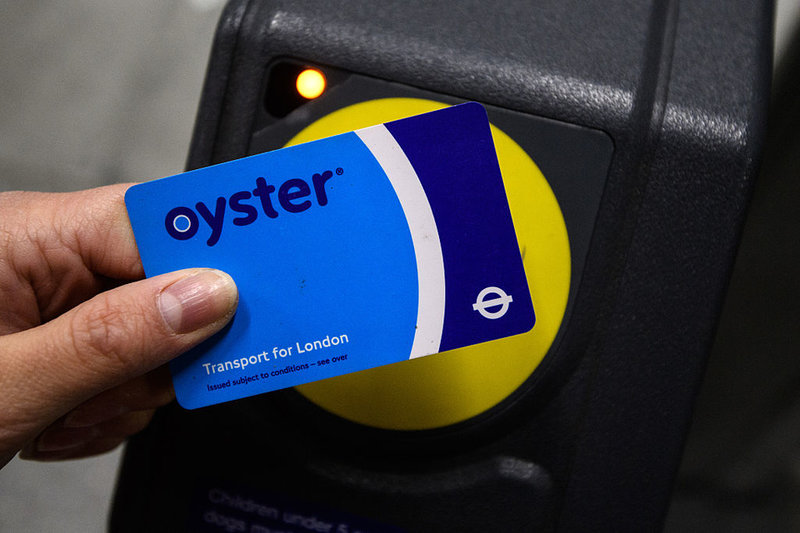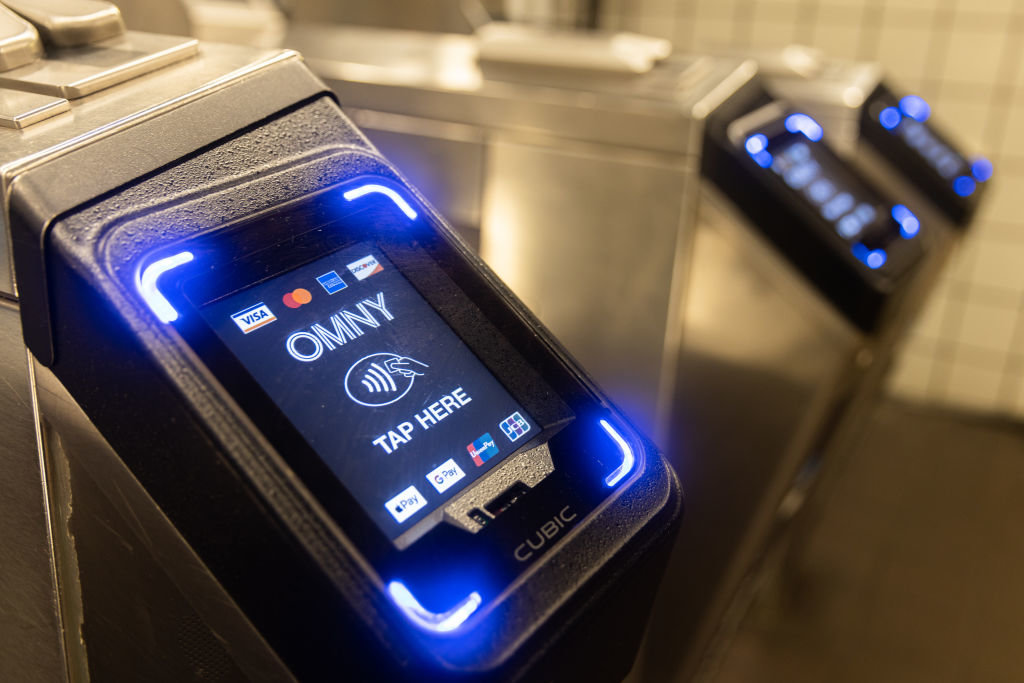Comment
What makes true ABT different from piecemeal attempts?
Aaron White, UK business development director at Cubic Transportation Systems, explains the benefits of fully integrated account-based ticketing.

London's Oyster card is one of the most successful examples of account-based ticketing. Credit: Carl Court/Getty Images
Modern, innovative account-based ticketing (ABT) is already redefining the concept of smart ticketing and moving away from piecemeal deployments.
Leveraging the latest technologies, these true ABT systems can deliver fully integrated solutions for operators that enable faster and fairer ticketing, and multi-modal access to public transport for all customers.

Aaron White, UK business development director at Cubic Transportation Systems
What is a true ABT system?
True account-based ticketing systems consolidate and integrate the intelligence formerly stored on both fare and validation devices by transferring it to the back office. The only exception to this is when a minimal amount of data needs to be written to the token to manage payment risk.
These fully integrated, modern ABT platforms are built on secure, cloud-hosted systems that support sophisticated functionality and high-speed processing, which would not be viable with traditional smartcard systems.
This incorporates management of fare policies, products and pricing, including journey construction, fare determination, capping calculations, and automatic trip correction for customers.
Modern ABT platforms are built on secure, cloud-hosted systems that support sophisticated functionality and high-speed processing.
Modern ABT solutions also work across multiple types of travel media, such as contactless smart cards, barcodes (on paper or screen), contactless payment cards, and mobile devices.
They use simplified validation devices that just need to read and authenticate travel media. This minimises the dependencies between the back office ABT and the validation devices making it much easier for agencies to make updates as required.
This contrasts with piecemeal procurement, where agencies have purchased devices and parts of backend services separately and then struggled to integrate them successfully, or not at all, which has led to a poor user experience with passengers uncertain if they have overpaid for tickets or bought the wrong ones.
Benefits of modern ABT
One of the key benefits of a modern solution is that, unlike legacy systems, its technical architecture has been designed to keep pace with rapidly evolving technologies and the demand for multimodal integration.
This future-proofing is vital to support the introduction of new forms of travel media such as biometrics, location awareness and ultra-wideband.
There is added value for customers too. They have the convenience of managing their account online and can buy tickets whenever they like.
On-demand, the system can quickly identify the cheapest fare combinations, tailoring these for individuals based on their account details, previous journeys and any pre-purchase products.
Disjointed deployments have fuelled the misconception that ABT is expensive.
Disjointed deployments have fuelled the misconception that ABT is expensive. Buying one component now and then purchasing add-ons and trying to integrate them later costs more in the long run.
Making all journeys easier by removing ticket worries and providing a consistent, integrated means of payment has been proven to increase ridership, which can also be translated into higher revenues.
Therefore, it is important to plan goals and assess solutions carefully before scoping an ABT project.
ABT success stories
New York City and Chicago are two large-scale examples of successful ABT implementations that replaced legacy systems with modern, integrated solutions.
New York City’s public transportation system runs 24/7 and serves one in three users of mass transit in the US. The New York Metropolitan Transportation Authority (MTA) has 8.1 million customers per day and its subway system is one of the largest in the world with 472 stations.
The MTA introduced ABT to replace a system that had some equipment dating back to the 1930s.
The MTA introduced ABT to replace a system that had some equipment dating back to the 1930s. It now offers riders absolute freedom when it comes to paying for their trips.
New Yorkers can use traditional agency-issued smart cards, open payments and digital wallets (virtual bank cards within a smartphone wallet). Its replacement rail ticketing machines are universal, configurable vending machines, capable of handling different types of fare media.

OMNY tap-in devices at a subway station in New York City, US. Credit: Jeenah Moon/Bloomberg/Getty Images
Additionally, there’s a traveller app, expanded retail network solution, customer call centre, and mobile ticketing.
The solution supports future integration with other account-based fare payment systems, providing a holistic, fully scalable solution for regional transit and surface transport management.
It also gives transit authorities the ability to influence traveller behaviour across transit modes and supports public equity and sustainability goals.
In Chicago, the second-largest public transit system in the US replaced its 20-year-old fare payment system with an ABT solution that offers a one-stop app.
Travellers with the app can manage trips, make payments and receive real-time alerts across all public transit services in the Chicago region. As a result, the agency met its goals of modernising fare payments and maximising convenience and account security for its customers.
Not all ABT systems are created equal
The first objective for any ABT deployment must be to consider all travellers and their needs, not just those with digital media. Then, to take into consideration that not all systems offer the same levels of integration, functionality, and future-proofing.
Operators and agencies can reap the many benefits of ABT if they have a complete understanding of what a true ABT solution can offer along with a strategic plan to deliver it.
This will enable them to be well-prepared for future developments and to create a better, more seamless riding experience for their customers.